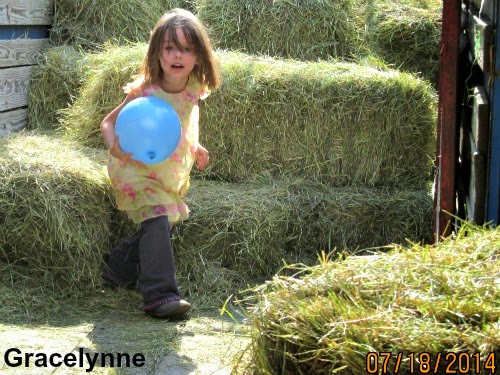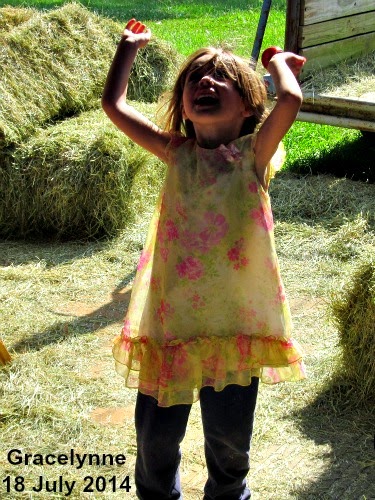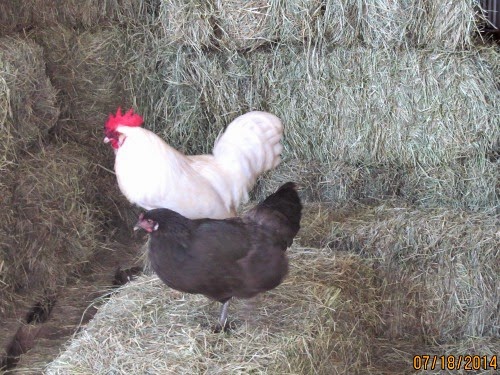Hmmm.... hay is an interesting topic! This one is LONG - get your favorite drink - and take a load off for a while!!
i/we owned our first horse (OURS) in Hawaii - I think we had him for 1 full, wonderful year before he was sold and we moved to VA for 2 yrs. Then, we spent 10 years in Colorado. Then I spent 2 years in MT. Between MT & CO, I was in/associated with the Army - in GA, SC, Korea and 3 distinctly different areas of Germany. Plus, did tours thru (and had to hit barns/horse places!!) Switzerland, Austria (didn't get to see the Lipizzaner stud/horses in Vienna) and Denmark (new hubby was quite unhappy with that one!)... Hay is different to every country and even in different micro climates w/i each country or here in the states. Even with all the traveling I did - I didn't put "2 & 2" together and figure it out (yup - young and dumb). I was amazed at some of the hays fed across the big pond - and the horses/ponies look GREAT.
When we moved from MT back to NC, I never even thought to ask about the hay and what I might need to do to change our ponies over from what we were feeding to what we were going to be feeding (pasture was grassland CRP - can't remember what that stands for, hay was an alfalfa/meadow grass hay shipped in from Canada. W/ 3 small horses & 3 shetland ponies, I used about 50#s of feed a month, and maybe 2 round bales of hay.). That COMPLETELY slipped my mind - my hubby didn't know anything about it. I was worried about a place to keep them (that we could afford) and then getting the house we thought we had sold back into one piece (it had been vandalized - doing almost $30,000 of damage to a beginner home mortgaged @ $55,000). The "5" acres (closer to 3.5) that we leased for our critters was in "grass" - which turned out to be mostly weeds. I also had to work very quickly at getting more fence up - I didn't know what hi-tensile wire was when I arrived in NC but learned quickly that unless hot and kept hot it didn't contain our small ponies very well! And the grass and hay in the fields surrounding us were ALWAYS "much greener" according to the ponies!



SOOO, the day after we arrived, I was taken to the main grounds of the boarding facility I was leasing my pasture from - 2 miles up the road. I was shown the "hay"... at which point I made a huge "faux pas" and inserted both booted feet into my mouth w/ the bald & bold statement ... "... that's hay? That's what we'd line our driveway with to keep from bogging in 3' of snow and ice ... "
I didn't get to take those booted feet out of my mouth much that first year, actually. Every time I turned around - things were just SOOOO different here in the south....
AS to the compressed bales of hay - not every feed store gets just the Standlee products (which I ?, for other reasons). I've had some good and some bad. I've had some the horses/ponies will eat and some they won't. I purchased "good" timothy shipped in from NY, that our vet felt would be good for the horses (arabians) and ponies. NONE of ours would eat that darned hay (and EXPENSIVE) - I sold all of it to the boarding barn I leased my pasture from. ALL the WB & TWH ate that "garbage" like it was going out of style!
Last year, for the first time when at the State Fair (tho I had to be quick as hubby was not interested in staying long at the Ag exhibits) I really paid attention to the hay samples and what they had been tested at nutritionally - from all over NC. Another eye opener! The worst "looking" hays (smelled awesome - reminded me of a hot summer day on my Gparents' farm in Kiron, IA in the 70s. They didn't cut hay but 1 farm over did and you could smell it) - had the best tests. The "prettiest" hays, smell OK, but not the same as the other, was the lowest in everything nutritionally and also the highest in the Acid count (can't remember what that is called).
2012 & 2013 were both BAD years - at opposite extremes of each other. Drought and then WAY TOO MUCH RAIN - many hay fields lay fallow and/or were burned off in our area - they were under water! and couldn't be cut when they needed to be. 2014 started with spring temps not getting high enuff to "jump start" the c/b hay fields in our area at all! Our main hay guy went into 2014 w/o fertilizing - he lost too much $$ the previous year with no hay to sell and couldn't do the first cutting w/ fertilizer. There is a noticeable difference in quality in the first cutting from the last 3 years...
Due to lack of hay from my main supplier in both 2012 & 2013 - I scrambled around and bought from many "new" suppliers in our area. Found out that there are a lot of hay growers out there but most didn't know what kind of hay they were growing (or didn't want to share that info, not sure which). They also are competing against each other and many have terrible things to say about all the others (hmm, I sorted out whom I purchased hay from by avoiding the talkers that spoke the most ill). I got some good hay, and some not so good hay. I also, at one point, got the only crap that was available - and it was a problem not so much with the ponies but with our larger horses.
"Fine, soft" hay in Coastal/Bermuda types is a quick way to impaction colic - not that much different than feeding grass clippings to the horses (the impaction part - not the fermenting part).
Does anyone know exactly how many different types of Coastal/Bermuda hay there are? Some varieties are GMO, some are not. Some are specifically grown for cattle and some are more oriented to the horse market - then quality depends on all the other factors - fertilization and mother nature. When I was 2 counties and 50+ miles further south and west from where I am now, the growers I purchased hay from KNEW WHICH TYPES of C/B they had planted. They SHARED that info. I found that all used some form of Tifton seed - some of which our ponies would not touch. One farm grew many different varieties - baled in both small squares and big rounds. He and I "played" and I got to try different ones. Then I moved up to Lillington... and it was different all over again. NOW - the Bermuda grass seen seems to have names rather than Tifton #s.
Bermuda Grass Seed Coastal Bermuda Grass CHOOSING HAY (pdf)
Lousiana SU - Eval of C/B Aggie Horticulture
ANOTHER learning experience - here is a GREAT DESCRIPTION of C/B and it's types and where it grows best in the South/Southeast done by
LSU Ag Center. and according to this study by University of GA - none of our (local) hay producers are cutting/baling at the right time frames!
Warm season Grass Breeding and here is one comparing Coastal to Tifton 85 (which my ponies 'turned their noses up" at) done by Florida SU.
Coastal vs T85 And this one, done by our own NCSU -
AGBermudaGrass is in-depth and long (good info, but....snore).
Google images of Bermuda grass hay and you will see a lot of difference in types of growth - both in the field and baled. I think I'm beginning to love GOOGLE (finally!).
What I've never understood is why no-one here in NC (our area) irrigates hay fields. Hay is/was considered a viable and important crop in other states I've been in and all hay we purchased was irrigated even in states that received "plenty" of snow and rain. Our area of NC seems to be in the minority when it comes to irrigating hay. I asked one guy about it and he stated ..."... not important enough to irrigate it. It grows or it don't ...". I didn't buy any hay from him.
I was going to ask some more ?s, Kim P, but now I'm tired and can't think straight. Maybe later. Need to post this before I do something stupid and lose the whole post!!
EDITED TO ADD - Currently we have 27 equine - WE FEED A LOT OF HAY. I can't seem to get any local hay suppliers to realize just how much I DO feed and what I'd be willing to do to keep ONE, main supplier!






